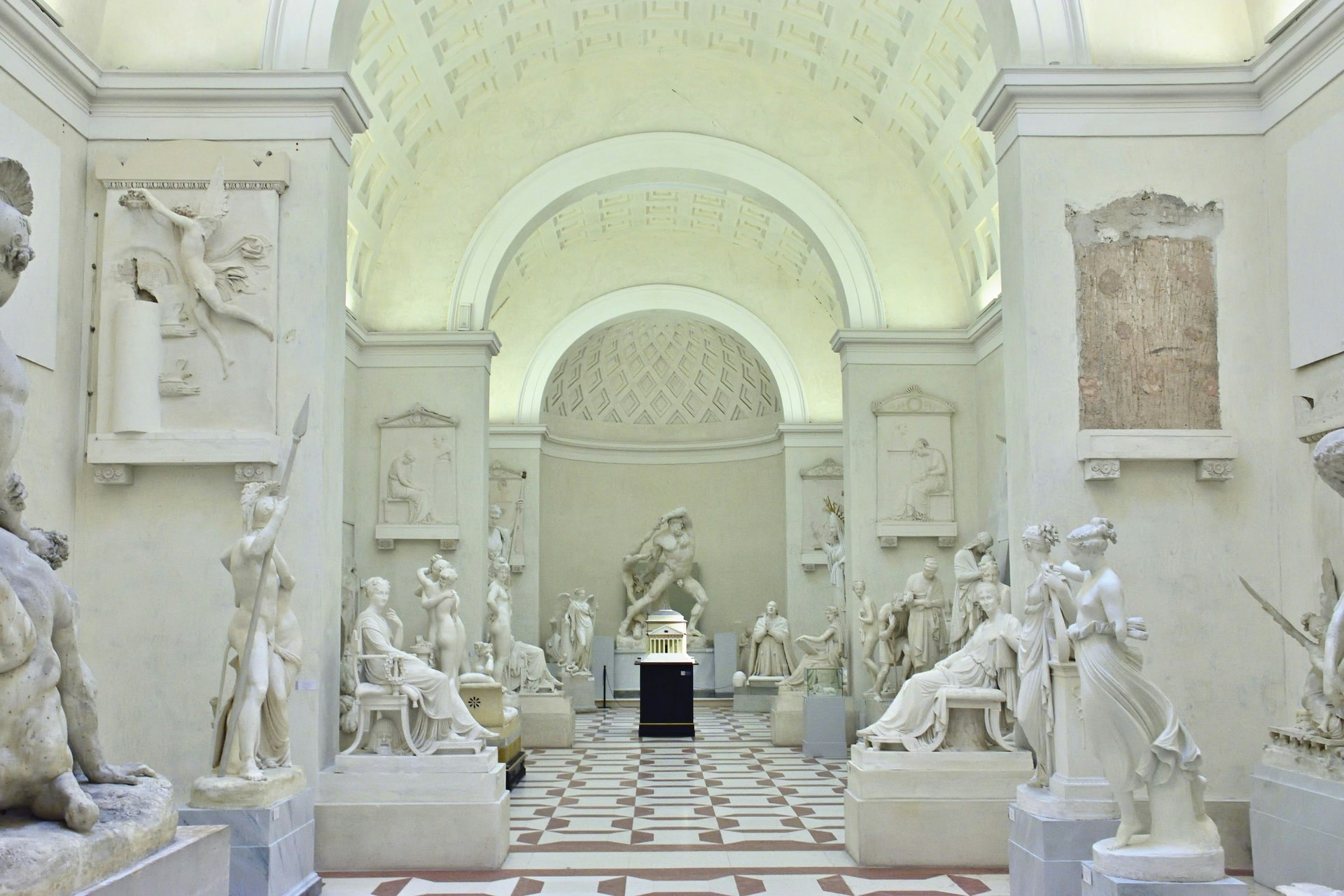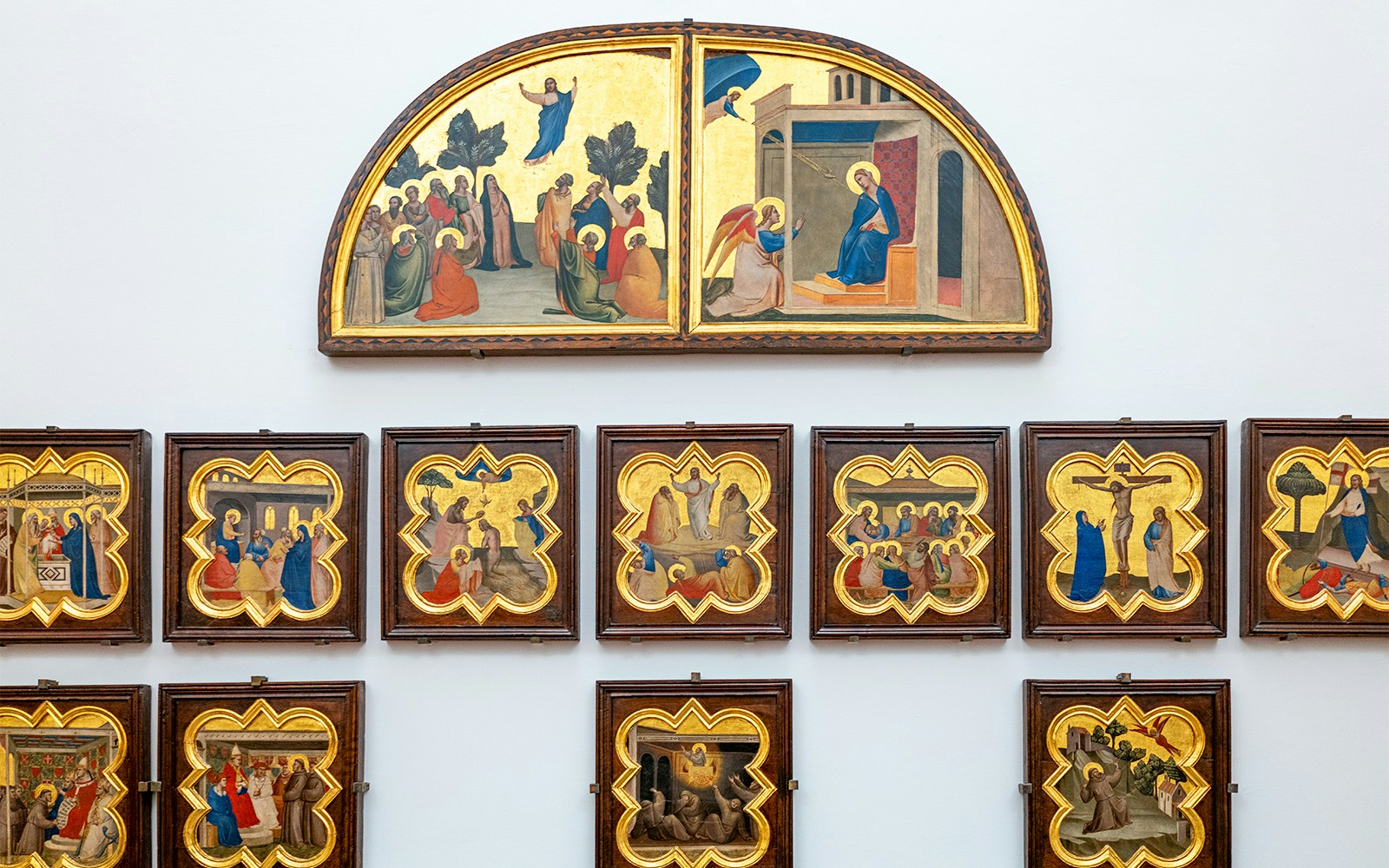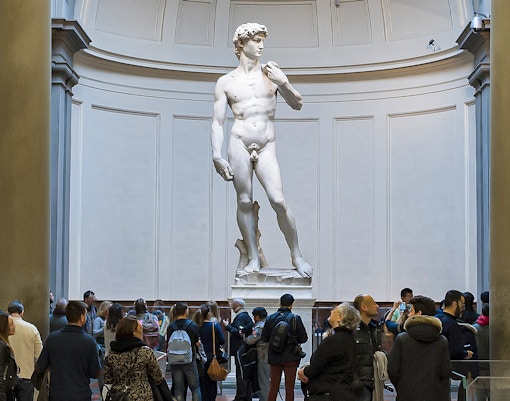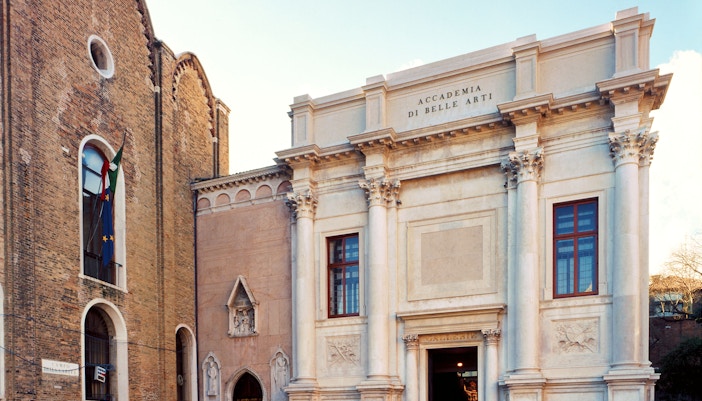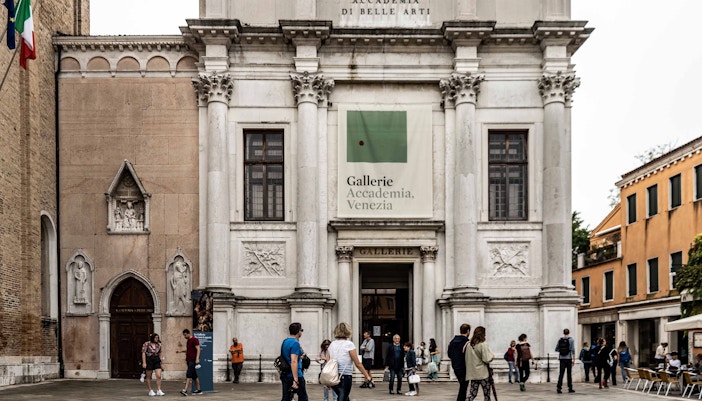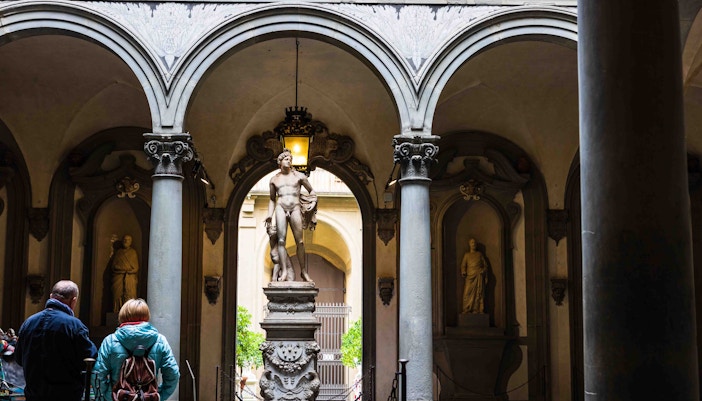Artist: Michelangelo
Year: Created between 1501-1504
Location: The Tribune
Michelangelo’s David is a fourteen feet high marble statue that depicts the Biblical hero David. Michelangelo was only twenty-six years old when he created the sculpture of David from a single, enormous block of marble. The statue of David depicts the hero just before the battle: tense and at the apex of his concentration. Michelangelo sculpted his David in a relaxed yet alert manner and made him stand in a classical pose known as ‘contrapposto’.

